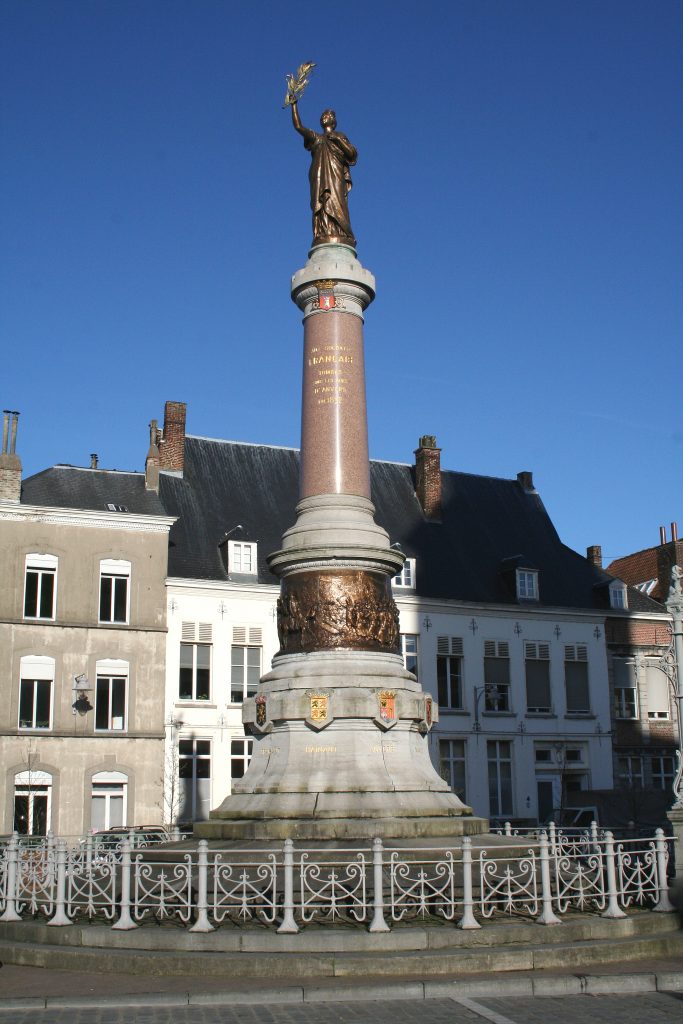The Misplaced Monument
Alan’s TTIM Stories #16
Who will remember the sacrifice of the honored dead? Who will refuse to memorialize? Battles, war, casualties cover history books and, unfortunately, today’s headlines. Stories told without lessons learned.
Beauty, interest, and confusion mark a particular point in the Belgian village of Tournai. The Monument Aux Soldats Francois dominates the Place de Lille. A statue adorns the top of a 40-foot ornate column to honor the French dead – not from World War I or World War II. It honors the French soldiers who gave their lives during the Siege of Antwerp in 1832. The honor to war casualties hides a lesson of differences – religion, language, culture, alliances, and pride.
Continental turmoil lasted throughout the 1800’s with sixty-seven recorded conflicts – wars, revolts, uprisings, insurrections, revolutions, invasions, military campaigns, and sieges. Alliances, rivals, and enemies could change with every sunrise.
The region north of France along the North Sea includes a long list of conquerors and governments – Romans, Vikings, Holy Roman Empire, Habsburg Austrian Empire, Spanish, and French. Through many centuries of occupation, the Netherlands finally became an independent nation led by King William I.
Being one nation in theory did not signify unity. The southern portion of the country (future Kingdom of Belgium) was divided between Dutch-speaking Flanders and French-speaking Wallonia – both Protestant. The north, including the King, followed Catholicism. Policies of the government favored the King’s religion.
With the support of European powers as a political move against a rival, Belgium declared independence in 1830. The humiliation of losing half the country to revolutionaries annoyed King William. In 1831 he tried to subdue Belgium with a military operation called the Tens Days’ Campaign. The new Belgian nation had no answer for the Dutch military.
Newly crowned King Leopold of Belgium, called for British and French support. Marshal Maurice Gerard a lieutenant under Napoleon, led a French Army of 70,000 soldiers to drive the out the Dutch. With numbers being on the side of the French, King William withdrew.
Not all Dutch soldiers they left the country. A garrison remained at the Citadel overlooking Antwerp. In an act of cruel revenge, the Dutch troops shelled the city, setting buildings on fire and causing civilian casualties.
The old warrior Gerard once again led the French army. Troops surrounded the Citadel on November 15, 1832. Weeks of heavy bombardment by mortars shook the fortress. The unrelenting resolve of the French Army forced the Dutch to abandon the Citadel and Antwerp two days before Christmas. The historic structure was demolished by 1881 – now the neighborhood/city of Zuid.
A proud French government designed a monument to honor the sacrifice of the French soldiers during the Siege of Antwerp. Dutch-speaking Antwerp, remembering the history of French occupation earlier in the century, rejected the offer. The French-speaking town of Tournai, two hours to the southwest, accepted the monument. A little-known battle memorialized by a lesser-known monument is a perfect representation of the chaos 19th Century Europe and a curious tourist photo op.

Sources:
Wikipedia
Photo credit:
Jean-Pol Grandmont – Wikimedia Commons
_____________________________
Follow announcements of Alan’s TTIM Stories
on Facebook.com/alan.vandervoort
or Instagram & Treads vandervoort_author.
All posts are available at www.alanvandervoort.com.
Novels by the author include: Sandhills – A Novel
and Key Largo Summer are found at Booklocker.com
and other online booksellers.
Leave a Reply